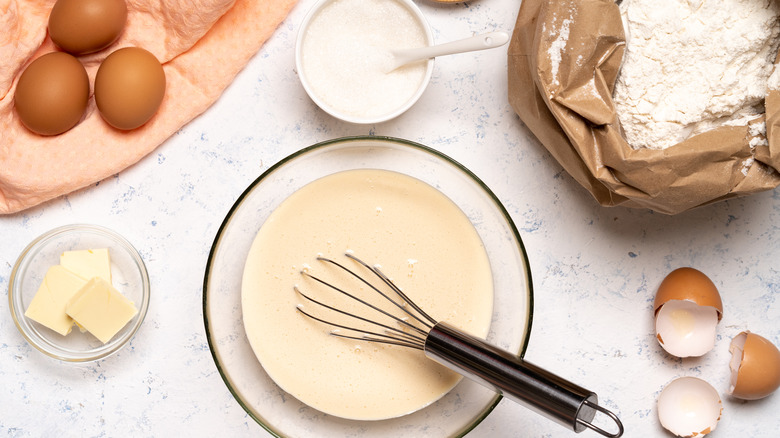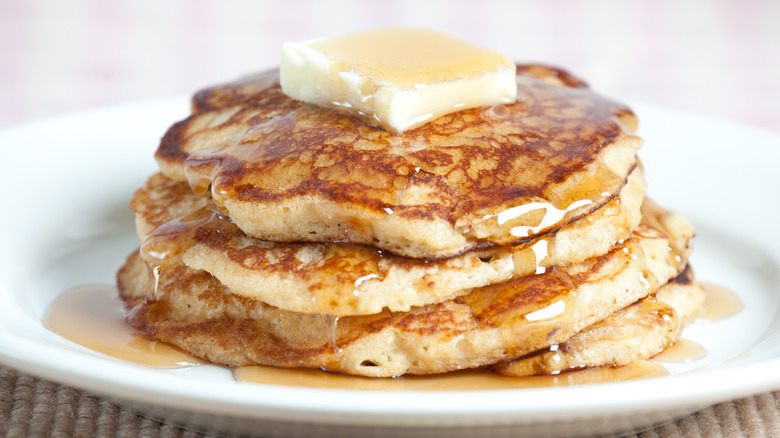The Major Mistake You're Making With Pancake Batter
Pancakes are one of the best breakfast foods out there — what's better than the fluffy, warm goodness that they provide? With that in mind, there's nothing worse than sitting down with a fresh stack of homemade pancakes only for them to be a bit disappointing. To avoid this, it's important to understand the best practices of making pancakes at home — including watching out that you don't make one key mistake: using warm water, instead of cold water, in the batter.
The temperature of the water may not seem like that big of a deal. After all, it's all about to heat up on the stovetop anyway, right? However, it's actually really important to make sure you take the time to use cold water. This is because the warm water may begin to heat up the gluten in the batter before the batter even has time to hit the pan. The result? Deflated, not-at-all-fluffy pancakes. And as noted above, one of the biggest appeals of pancakes is their fluffiness. So, to ensure that much-desired feature, make sure to use cold water.
Other homemade pancake-making mistakes to avoid
To make the best pancakes, you'll want to keep in mind other common mistakes that you may be making. One frequent error is overmixing the batter, which, once again, will lead to pancakes that are not as fluffy as they should be. Overmixing is another no-no, as it will deflate the air bubbles in the batter, which are there thanks to the fact that the leavening agent (typically baking soda or baking powder) starts working right away. So by continuing to mix, you're working against that leavening agent and preventing it from its end goal: fluffy pancakes.
A couple of other common mistakes have to do with the heat of the pan, which you need to get just right to achieve the perfect pancake. Firstly, it's essential to be patient and wait until the pan is sufficiently hot — if you start the cooking process prematurely, then you won't end up with the crispy pancake exterior that's so delicious. To check if the pan is the right temperature, add the oil to the cold pan first, then begin the heat and keep an eye on how hot the oil is getting — and on the other end of the spectrum, if it starts smoking, then the pan is too hot. Meanwhile, you also don't want to cook the pancakes on heat that is too high because the insides won't cook through and the exterior may burn; keeping the heat at the medium setting is ideal.

